Makers of the Book: The Printing Press
Posted on Jun 15, 2015
Visit to CDC Printers, Kolkata
5 June 2015
A book is factually defined as a written or printed work consisting of pages glued or sewn together along one side and bound in covers that communicates information (refer to OED for more).
The evolution of book production has come through the momentous history of developments in communication and information technology. It is interesting to note that contemporary techniques in book production have emerged from the innovations of the fifteenth-century European printing press pioneered by Gutenberg. The sophisticated machinery for typesetting, printing and binding have been in practice since the nineteenth century.
All this can become slightly tedious to read, but the truth of this historical evolution unfolds the moment you step inside the printing press.
We made this journey backwards. From the printed pages and gathered ‘book blocks’ to preparation of plates for the offset printing machine.
PART I: GATHERING PRINTED PAGES INTO THE BOOK
 (Photo 1) Folded sections are being manually gathered in sequence to be bound with glue and/or sewn with thread. Apart from skills and precision, good quality printing-binding comes from strenuous teamwork!
(Photo 1) Folded sections are being manually gathered in sequence to be bound with glue and/or sewn with thread. Apart from skills and precision, good quality printing-binding comes from strenuous teamwork!
-

(Photo 2) Sections of a book is being manually gathered in sequence and arranged for binding.
-
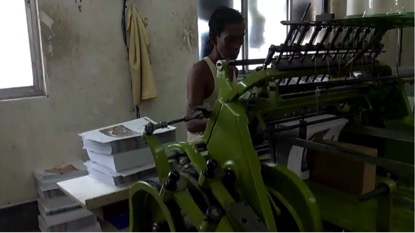
(Photo 3) Gathered sections of a printed book being sewn with thread by machine.
-

(Photo 4) Machine-sewn book blocks.
-
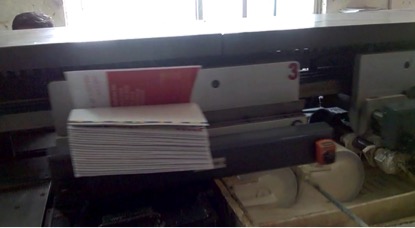
(Photo 5) Printed sections gathered and/or sewn as ‘book block’ being bound with glue. Rollers placed in a basin of adhesive apply to the spine of the ‘book block’ adjusted strategically in a conveyor machine.
-
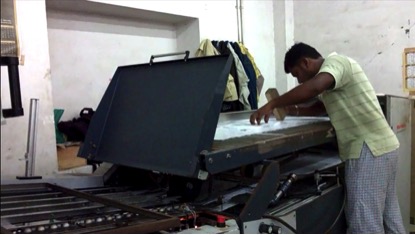
(Photo 6) Offset printed broadsheets being manually fed into the folding machine.
-
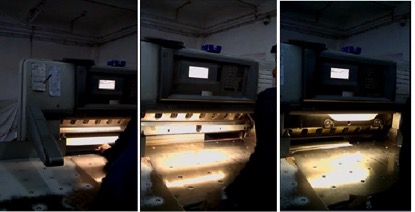
(Photo 7) Guillotine machine trimming the edges of printed sheets at the preset
‘crop marks’.
-
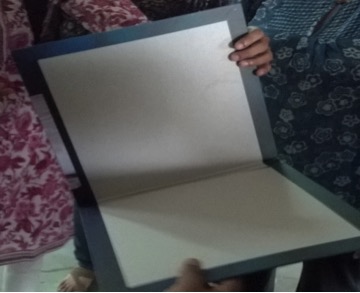
(Photo 8) While discussing the hardback covers. All covers are separately printed, bound and often laminated. Hardback covers are often wrapped in laminated dust jackets.
-
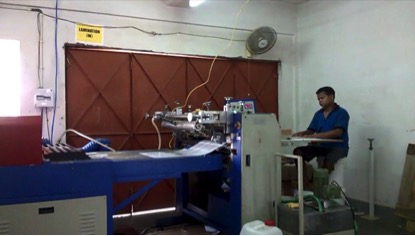
(Photo 9) The lamination machine. Where thin plastic is coated over paper to make it waterproof and durable. Most often used for book covers.
.
PART II: OFFSET PRINTING
(Photo 10) Ronnie Gupta explains the technique of preparing the aluminum plates for offset printing. In this picture, he is seen holding a cyan plate.
The colour-coated photosensitive aluminum plates are exposed to light via laser device that emboss design or text over the plates. For four-colour printing, four such plates are prepared—cyan, magenta, yellow and black.
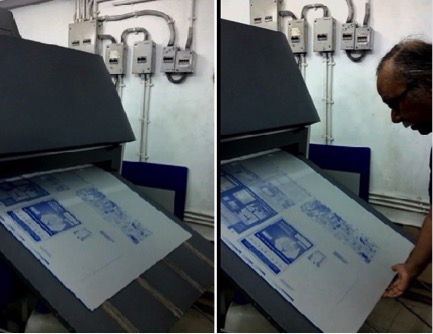 (Photo 11) The exposed colour-coated aluminum sheet is then washed in order to replicate the design/text onto the plate. The density of dots per inch (dpi) recreates the design/text. Special markers printed on the plates indicate the varying density of colour in the design/text. The same is applicable for all plates depending on the type of printing, namely, greyscale, two-colour, four-colour, etc.
(Photo 11) The exposed colour-coated aluminum sheet is then washed in order to replicate the design/text onto the plate. The density of dots per inch (dpi) recreates the design/text. Special markers printed on the plates indicate the varying density of colour in the design/text. The same is applicable for all plates depending on the type of printing, namely, greyscale, two-colour, four-colour, etc.
-
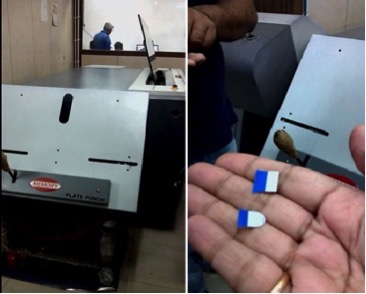
(Photo 12) Perforations are made at specific points on all washed plates in order to hold them steady when placed inside the offset machine for mass scale printing. Few scraps of perforated cyan plates were given to us as souvenirs!
-
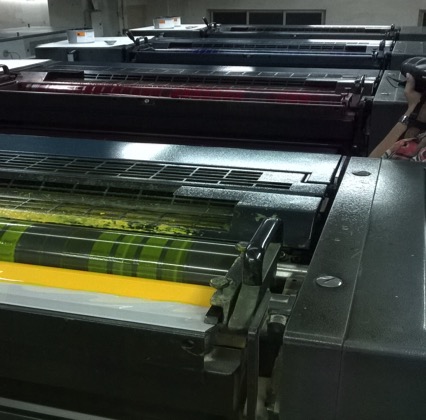
(Photo 13) The offset printing machine. Of the four colours the yellow and magenta/red inks are visible in this picture.
-
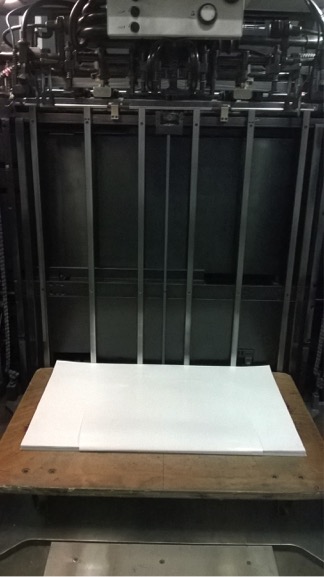 (Photo 14) Sheets of paper to be fed into the offset printing machine.
(Photo 14) Sheets of paper to be fed into the offset printing machine.
-
 (Photo 15) The mark that is placed on the plate is replicated on the printed paper to denote alignment of ink.
(Photo 15) The mark that is placed on the plate is replicated on the printed paper to denote alignment of ink.
-
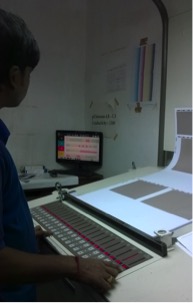 (Photo 16) The pH balance of printing ink is electronically monitored. Various other computers are used to scan colour codes, alignment of ink, etc.
(Photo 16) The pH balance of printing ink is electronically monitored. Various other computers are used to scan colour codes, alignment of ink, etc.
In sum, the creative evolution of a book is metaphorically akin to the continuous creation of life: conceived as an idea, evolves as a manuscript in the hands of the author, incubated and shaped by the publisher, it runs through the machinations of the printing press and emerges as a form of life!
As Gaiman elucidates, 'Book is a dream that you hold in your hand.'
Photo essay by Sayoni Ghosh
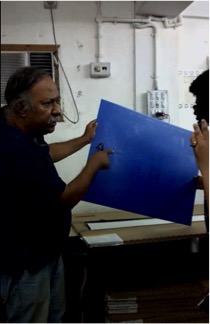
Leave a comment ×
1 comments